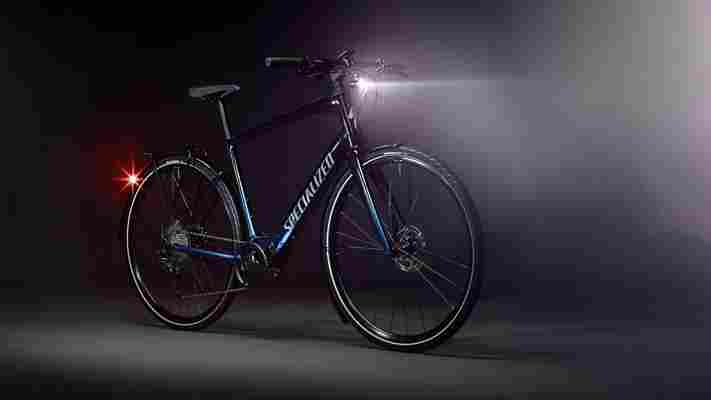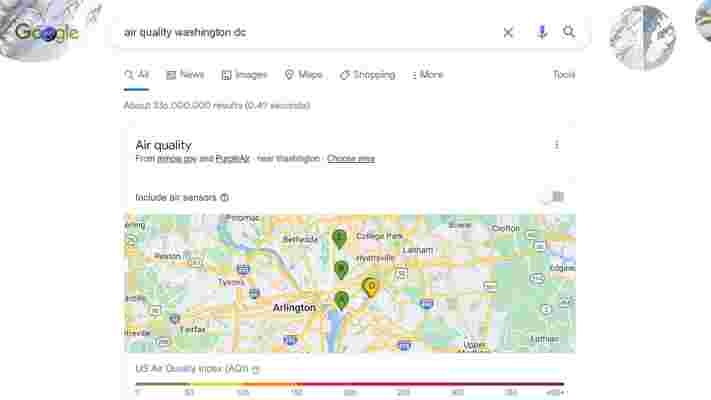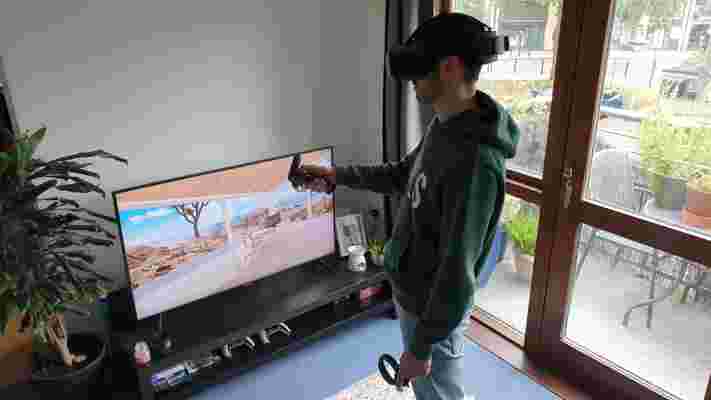Any new or evolving technology comes with some degree of vagueness, especially when it concerns legislation. That's definitely been the case with e-bikes , which have often fallen into the law-making middle ground; not being classed as proper bicycles, but not judged as a real motor vehicles either. It’s all been a little bit fuzzy. The same can be said about where e-bikes should, or shouldn’t, be ridden because of having a battery and electric motor.
The situation is improving though, because most electric bikes now fall into one of three different classes. Back in 2020 the e-bike industry decided to get together and come up with a plan, which has resulted in the creation of Class 1, Class 2 and Class 3 categories.
Simple, right? Well, not quite because although the class system is now recognised by over half the US states, it’s still not a truly definitive classification system.
Adding to the confusion is the continued growth of the electric bike marketplace. With more manufacturers building e-bikes, and additional bike retailers stocking them, the potential for continued confusion seems to be ever-present. It is a step forwards though, but shouldn’t be taken as the final word. If you’re not sure if the e-bike you’re interested in falls into one of the three classes outlined below, you might want to do a little more homework before purchasing it.
Falling foul of the authorities and facing legal issues if you happen to ride in the wrong place, or worse still, have an accident, should all be kept in mind no matter how cool that e-bike you’re keen on looks.
E-bike Class 1
Class 1 electric bikes have a speed limitation of 20 miles per hour, and the classification is made simpler by the fact that the electric motor only assists the rider when they’re pedalling. You may find that the e-bike has a throttle, usually mounted on the handlebars, but this will only provide a boost. The basic setup can obviously vary depending on the make and model of electric bike.
As a result, Class 1 e-bikes usually get to enjoy all the privileges afforded to regular pedal cycles, which means general access to bike paths and designated lanes. This is also the only type of e-bike that's not classified as a moped in the UK and EU.
The VanMoof S3 / X3 models are good examples of this class, along with the rather good Cannondale Quick Neo SL .

E-bike Class 2
Class 2 bikes come with the same 20mph speed limitation, but can deliver power from the battery and motor combination using a throttle, even if you’re not pedalling. Some electric bikes in this class can do a mix of both, with the motor doing all the work, a combination of motor and pedal assistance.
Much like the Class 1 category, many countries allow you to ride a Class 2 e-bike on bike paths and lanes. Look out for the likes of the Aventon Pace 350 or the Wing Freedom 2 as a pair of prime examples.

E-bike Class 3
Class 3 e-bikes make things rather more complicated. Class 3 e-bikes are likely to have a throttle setup as part of the design, their speed allowance is a higher 28 miles per hour, and their motor limit is 750 Watts, but it's not so clear-cut where you can ride them.
The exact rules will depend on the country and city you're in. For example, you don’t need a license to ride one of these bikes in the US, but you should exercise caution about where you ride the two-wheeler, such as on regular roads and designated bike lanes. They’re not usually allowed on multiuse paths or bike trails though.
It’s really worth checking city and state rules before you buy a Class 3 bike, to make sure it’ll fall in line with local regulations. Remember this point if you’re taking your e-bike out of state too. The excellent Specialized Turbo Vado SL Equipped is a great e-bike in this class, but the Trek Domane+ HP is a very worthy alternative too.

Buyer beware
If you take a look at our guide to the best e-bikes you’ll find those included should fit the bill in at least one of our categories. Anyone purchasing an electric bike should be mindful of variations on the theme though. Specifications can change, models can be updated and some manufacturers throw caution to the wind and release bikes with more power than they might actually need.
In fact, some vehicles sold as electric bikes are effectively electric scooters or mopeds, rather than e-bikes. This can mean that although they may have pedals, they’re able to go much faster. There are lots of imported bikes that have more power than is wise for something that looks like it can be ridden on a cycle path. What’s more, while this guide is aimed at potential e-bike buyers in the US, rules are different overseas.
Things are getting better, but it’s an evolving situation that is perhaps not as clear cut as we’d like. If you’re new to the world of electric bikes then playing it safe might be the best way forward, with a Class 1 or Class 2 bike much less likely to cause you headaches than those found in the currently rather murky world of Class 3.
Google's Earth Day gift is the grim realization of how polluted your city is
Google has developed a new feature that allows you to view the air quality of major cities within the US. This is likely tied to other sustainability and environmental education efforts from the company for Earth Day on April 22.
As reported by MSPoweruser , this feature was initially released in India but has since also been rolled out in Victoria, Australia, and various cities across the US, using data from airnow.gov and PurpleAir . “We’re always working on new ways to connect people with helpful information when they come to Google,” a Google spokesperson said. “We continue to explore ways to make authoritative information on a range of sustainability and environmental topics readily accessible and look forward to sharing more in this space soon.”

To use this feature you can simply type "Air quality in Washington DC" (or the name of the city you're searching for) into the search engine on your mobile, laptop, or computer, and you'll be presented with a map of the local area, alongside a US Air Quality Index (AQI) which measures air quality from a scale of 0 to 500.
This scale is also color-labeled with the usual Green = good and Red = bad, with specific areas on the map showing how the air quality can differ across the entire city. This is especially useful if you're wanting to relocate, but stay within the city area and wish to be mindful of local pollution.
We tried a few other major cities such as London and Paris and found that while metrics are provided in a graph, no map appears to clearly display the air quality in various zones of either city. It also isn't clear how many US cities are included within this feature right now, but we certainly hope that it gets rolled out on a more global scale so we can breathe easy in the knowledge that we canell, breathe easy.
Analysis: good, but we need more
Google has a good habit of trying to include additional sustainability efforts across many of its hardware and search engine integrations. Being able to measure the air quality directly is a great asset and one that could benefit folks that live outside of the US. Thing is, there are rival search engines that market themselves as an environmentally friendly alternative to Google, so why isn't it doing more to level the playing field? Ecosia comes to mind, with its promise that using its search engine will plant trees, using funds raised through ad revenues when you use the platform.
Does Google do something similar? Perhaps, but I certainly can't find any trace of similar practices, and even searching for results on Google itself using the term 'Does Google plant trees' comes up with pages and pages of articles for Ecosia instead. If the tech giant was making such efforts, it would do well to shout about them more.
Thankfully there is a middle ground as Ecosia has a chrome extension that works alongside the Google web browser, though we found that our own company administration blocks this from being installed, which is likely to be a similar story across a lot of corporate devices.
Still, with Google integrating functions that allow you to check on pollution and air quality, it would be nice to see if the company was taking greater steps to improve the results given its status as one of the largest companies in the world. The environment is all of our responsibility after all, and Google certainly has more power and money to make changes than asthmatic individuals visiting a new city for the first time.
Here's what a pair of AR sports glasses taught me about the future of work
There has been plenty said over the last decade about the potential for augmented and virtual reality to transform the working environment, particularly in an industrial context.
Despite the efforts of companies like Microsoft and Magic Leap, this grand vision is yet to come to fruition. However, the conversation around extended reality (XR) has become increasingly energetic since the metaverse entered public consciousness, and there are signs we may be on the cusp of a shift.
To see what all the fuss is about, I got hands-on with a pair of sports glasses from a company called Engo, which use ActiveLook AR technology to project information into the periphery of the wearer’s vision.
Although the glasses are neither as powerful nor feature-rich as the leading enterprise headsets, the core premise is largely the same. And they taught me more about the future of work than expected.
Surprisingly natural
The simple purpose of the Engo glasses is to improve the safety of runners and cyclists by eliminating the need to glance down at a sports watch or head unit to consult activity data, which means more time spent with eyes on the road.
The specific data projected into the lens of the Engo glasses can be configured by the user, but includes real-time speed, distance travelled, time elapsed, elevation gained and so on. By waving a hand in front of the glasses, the wearer can switch between two separate banks of data.
In a factory or hospital setting, AR glasses fulfill a similar purpose, serving up important data to workers whose hands are otherwise engaged, and improving safety standards in the process.

What was most striking, having never worn a pair of AR glasses for longer than a few minutes, was the speed with which I became accustomed to receiving information in this new way.
Initially, it was disconcerting to have an artificial source of light hovering in the periphery of the vision, and the temptation was to physically turn the head to consult the information in the lens. But the quick sideways shift of the eye necessary to get a clear look at the figures became second nature soon enough.
And although the additional technology makes the smart glasses heavier than a regular pair, they are comfortable enough to wear for long periods of time, which will be a crucial factor if the technology is to achieve any real penetration. Admittedly, professional-grade AR glasses are even bulkier, but they benefit from extra strapping and support too.
The Engo glasses are also kitted out with photochromic lenses that adjust automatically to the light conditions, which in theory means the same set can be used at any time of day. In practice, I found the lenses performed well in full and partial sun and were a little dark at night, but they certainly weren’t unusable, and I can imagine a similar style of lens coming in handy for repair technicians and other workers operating in outdoor environments.
As for the data itself, the AMOLED display was plenty bright enough to ensure the information was legible on even the sunniest day.
So close, and yet so far
As enlightening as the experiment was, I still wouldn’t incorporate the Engo smart glasses into my regular ridewear. And for the same reasons, AR glasses like these will continue to find a comparatively limited audience in the professional sphere too, at least until a few kinks can be ironed out.
The most frustrating issue is that, unless the glasses are positioned just-so on the bridge of the nose, the data projected into the lens becomes blurred to the point of illegibility or slips from view entirely.
This field of view problem is far from ideal when hurtling down a descent on a bicycle, and would be even more irksome for someone performing a tricky repair on a piece of machinery, conducting a surgery, or doing anything else of the sort. And nor is the issue uncommon; the first-generation HoloLens had a notoriously slim field of view, which led to all manner of clipping and visual glitches.

The second problem was that the glasses would often misinterpret a glance down at the road or the shade of a passing tree as the hand motion that triggers the switch between data screens. It’s tough to draw a broad conclusion based on a quirk of a particular set of glasses, but it did highlight the need for all sensors to be functioning at full capacity for AR to deliver on its promise.
Lastly, but not leastly, there’s the vanity factor. Inevitably, the need to squeeze processors, lasers and mirrors into head-mounted device means AR glasses are bulkier than typical eyewear. Engo has done a decent job of concealing the hardware, but the glasses still give the wearer the look of a bluebottle fly.
Until AR glasses begin to look a little more sleek, I predict a general reluctance to wear them, regardless of the new scenarios they might enable. No one wants to be the next “ Glasshole ”.
Is the AR revolution inevitable?
The amount of investment flooding into the XR sector and major hardware contracts signed by the likes of the US military suggests the technology is making in-roads, at least in some sectors.
The industrial market will undoubtedly be the first to adopt AR, because the technology offers a novel solution to a long-standing problem, giving factory operators and repair technicians a way to access data and communications hands-free in difficult environments.
In an office context, AR glasses are more of a quality of life improvement, which means the expense is difficult for businesses to justify, irrespective of any potential productivity benefits.
However, as with all emerging hardware, AR glasses will come down in price and manufacturers will figure out how to pack more compute into a smaller, lighter form factor. We’ve already seen this process play out in the consumer VR space, with standalone headsets like the Oculus Quest and HTC Vive Focus largely competitive with the PC-tethered models from years gone by.

When the sums begin to look a little more sensible for businesses, it’s easy to envisage AR playing a bigger role in all of our working lives, not just for factory workers, military and medical professionals.
Imagine a scenario in which remote workers trade in their multi- monitor setups for a combination of traditional, AR and VR displays.
While activities like editing documents and browsing the web might be better suited to a conventional business monitor , AR glasses could serve up email and Slack notifications and alert the wearer to upcoming calendar bookings. Ahead of an important event or meeting, workers might then switch into a lightweight VR headset that better simulates in-person interaction.
Until now, I’ve been relatively skeptical about this vision of the workplace of the future, peddled mostly by the manufacturers of XR hardware and other companies with skin in the game. We already probably have too many screens in our lives, without a pair of specs that lasers data into our eyeline, I thought.
But the experience with the Engo glasses, as much as it can only be considered a loose comparator, showed me that AR doesn’t have to be intrusive. And the potential use cases are compelling.
I may not be ready for AR just yet, but then, AR isn’t quite ready for me yet either.